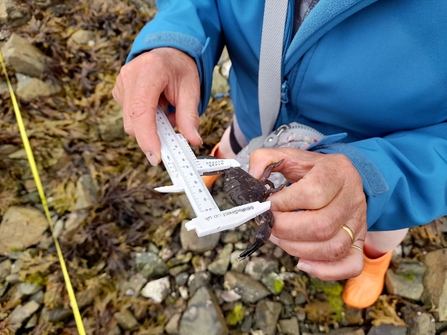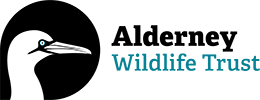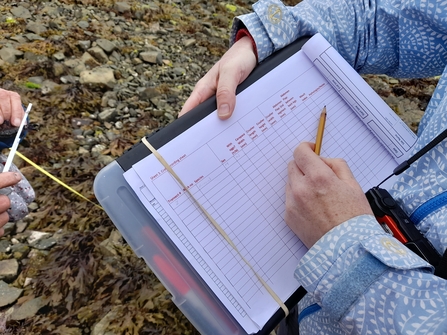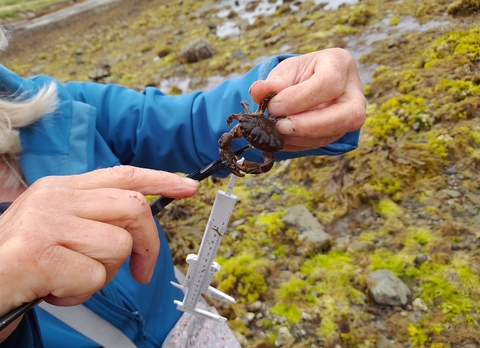
Lou measures the carapace of a furrowed crab - Credit: Thanh Doan
‘That’s a really big one!’ I exclaimed in delight at the size of an Edible crab under the rock that Lou has just turned.
Last Wednesday, I joined Mel, the AWT Living Seas Coordinator, and Lou, a seasoned citizen scientist, for my first ever crab survey at Braye's rocky shore (east end) during low tide.
To start with, a transect line was set from the shore to the water mark. Lou then walked along the transect line, stopping every 2 meters to selectively turn a big rock near the transect line. The team identified and recorded crabs and other species found under each rock. We found plenty of crabs, mainly broad-clawed porcelain, furrowed, and a few Chancre crabs. The furrowed and Chancre crabs were then put into separate buckets, measured one by one and then carefully put back to where they were.













